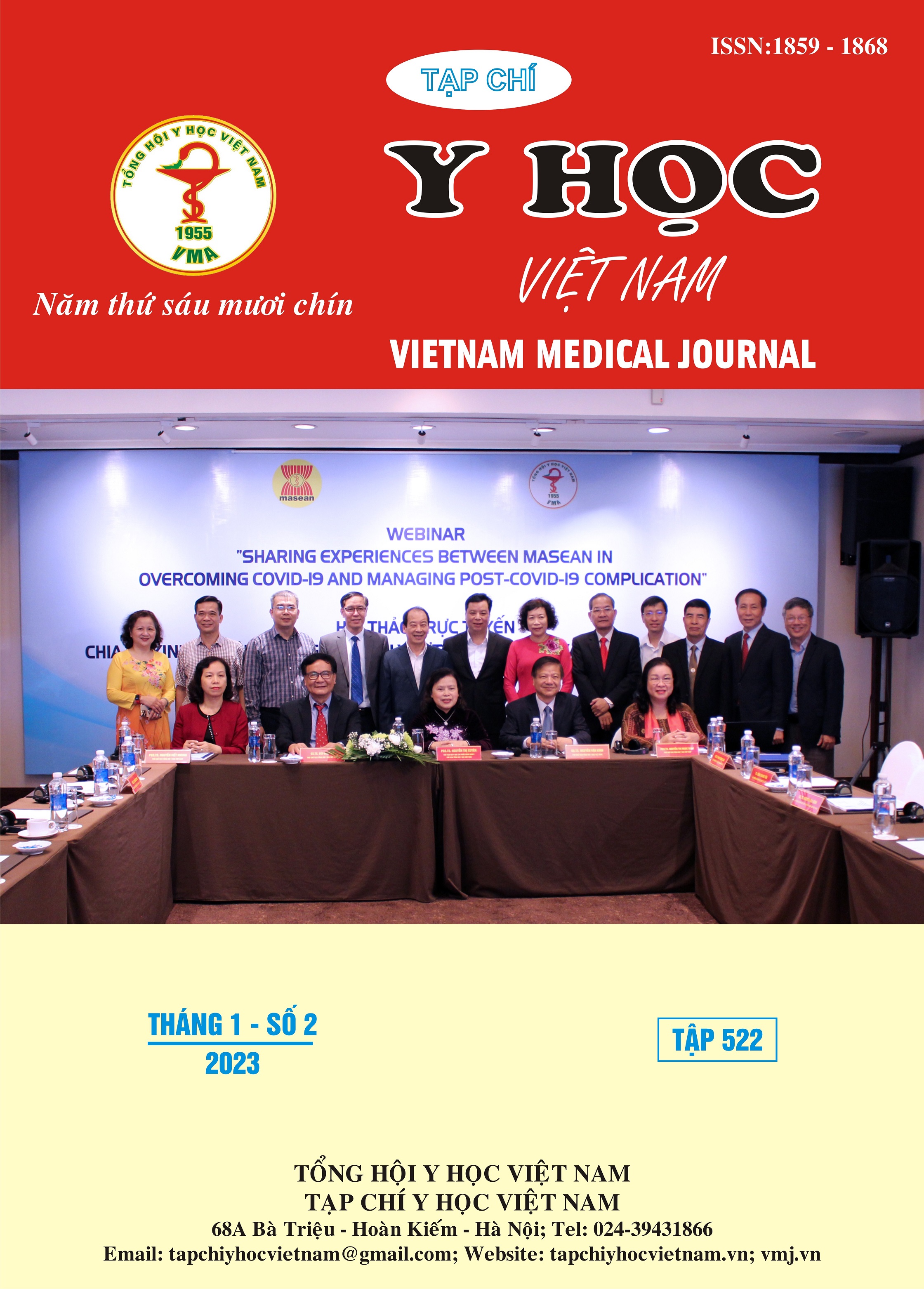DIAGNOSIS OF CHYLOUS FISTULA IN PATIENTS WITH TOTAL THYROIDECTOMY WITH CERVICAL LYMPH NODE DISSECTION FOR THYROID CANCER TREATMENT
Main Article Content
Abstract
Objectives: Describe the clinical and subclinical forms of chyle leak in patients with total thyroidectomy with cervical lymph node dissection for thyroid cancer treatment. Patients and method: A prospective cross-sectional descriptive study on 52 patients diagnosed with chylous fistula during or after total thyroidectomy with cervical lymph node dissection for thyroid cancer treatment at the National Hospital of Endocrinology since March/March/ 2021 – March 2022. Results: The most common age group is from 30 to 45 years old, accounting for 42.3%. The female/male ratio is 3/1. Intraoperative fistula has a transparent color, accounting for 100%. Postoperative fistula with milky white color is 68.9%. Time to detect fistula is the first postoperative day, accounting for 64.4%. The highest number of 24-hour drainage fluid is 80.8 ± 76.1ml (30-300ml). The concentration of Triglyceride in the fluid detected intraoperatively was 83 ± 28.9 mg/dL, no patient had a higher concentration in the fasting serum. Triglyceride concentration of post-operative fistula was 545.8 ± 489.7mg/dL. Conclusion: Chyle leak is a possible complication in patients with total thyroidectomy with cervical lymph node dissection. This complication can be detected during or after surgery. Diagnosis is based on colour, quantity, and concentration of triglycerides in the fistula fluid.
Article Details
Keywords
chyle leak, cervical lympho node dissection, thyroid cancer
References
2. Haugen BR, Alexander EK, Bible KC et al. 2015 American Thyroid Association Management Guidelines for Adult Patients with Thyroid Nodules and Differentiated Thyroid Cancer: The American Thyroid Association Guidelines Task Force on Thyroid Nodules and Differentiated Thyroid Cancer. Thyroid. 2016;26(1):1-133. doi:10.1089/thy.2015.0020
3. Dhiwakar M, Nambi GI, Ramanikanth TV. Drain removal and aspiration to treat low output chylous fistula. Eur Arch Otorhinolaryngol. 2014; 271(3):561-565. doi:10.1007/s00405-013-2534-9
4. Crumley RL, Smith JD. POSTOPERATIVE CHYLOUS FISTULA PREVENTION AND MANAGEMENT: The Laryngoscope. 1976; 86(6): 804-813.doi:10.1288/00005537-197606000-00008
5. Thái Hồng Quang (2008). Các U Của Tuyến Giáp. NXB Y học.
6. Nguyễn Ngọc Cương (2020). Đánh giá kết quả bước đầu kỹ thuật nút tắc ống ngực điều trị rò dưỡng chấp tại Bệnh viện đại học Y Hà Nội. Tạp chí nghiên cứu y học,134:198-205.
7. Park I, Her N, Choe JH, Kim JS, Kim JH. Management of chyle leakage after thyroidectomy, cervical lymph node dissection, in patients with thyroid cancer. Head & Neck. 2018;40(1):7-15. doi:10.1002/hed.24852
8. Roh JL, Kim DH, Park CI. Prospective Identification of Chyle Leakage in Patients Undergoing Lateral Neck Dissection for Metastatic Thyroid Cancer. Ann Surg Oncol. 2008;15(2):424-429. doi:10.1245/s10434-007-9692-1
9. McGrath EE, Blades Z, Anderson PB. Chylothorax: Aetiology, diagnosis and therapeutic options. Respiratory Medicine. 2010;104(1):1-8. doi:10.1016/j.rmed.2009.08.010.


